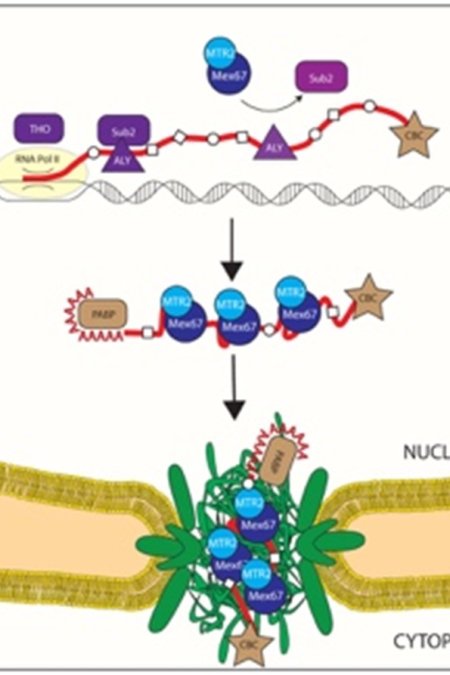Dr. Paola De Magistris

Research Summary
Nuclear export of messenger RNA (mRNA) from the nucleus to the cytoplasm through the nuclear pore complex (NPC) is an indispensable step to ensure protein translation of eukaryotic cells. mRNA is not translocated on its own, but it forms ribonuclear particles (mRNPs) in association with RNA binding proteins (RBPs) that are crucial for its transcription, protect it from decay, and guide it through export and translation. The process leading to an export competent mRNP is defined maturation: the loading of transport protein generates mature mRNPs, which are targeted to the nuclear pore complex and translocated to cytoplasm (Figure 1B and 1C). For nucleocytoplasmic transporters to function as mRNA export receptors,they must bind both the RNA cargo as well as the nuclear pore complex proteins (nucleoporins) responsible for nuclear gatekeeping (green in Figure 1).
We investigate how the mRNPs assemble and mature in the nucleus, as well as the molecular and structural features that underlie the mRNPs functionality for export.

